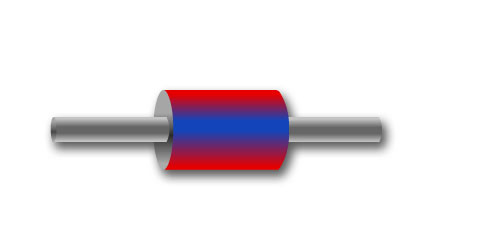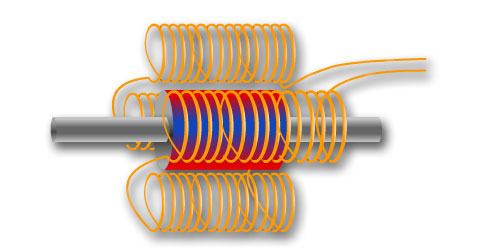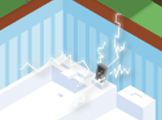A generatorA machine that causes an electric current to flow in wires by taking energy as movement and transferring it to energy as moving charge. contains a large magnet fixed to an axle. The magnet is usually an electromagnetA magnetic field is produced when an electric current is passed through a wire wrapped around a piece of iron. The iron has become an electromagnet..

Lots of thick copper cables surround the magnet. These cables are fixed in position.
As the axle and magnet rotate (run your mouse over the picture), electric currentElectric current is a flow of electric charges (electrons). is generated in the cables - in just the same way that Faraday discovered in his experiment - but on a much, much bigger scale.
Somewhere right now, generatorsA machine that causes an electric current to flow in wires by taking energy as movement and transferring it to energy as moving charge. are whizzing around to create the electric current that's transferring energy to power your computer (assuming it's not battery powered!) and any other appliances you're using. This is because electric current has to be generated when it's needed - you can't store it.
What makes the generators turn?
In order to create electric current with enough power to do useful jobs like light and heat our homes and power trains, the magnet inside the generator must rotate at high speed - and this requires an input of energy. We get this energy from non renewable energy sources and renewable energy sources.





